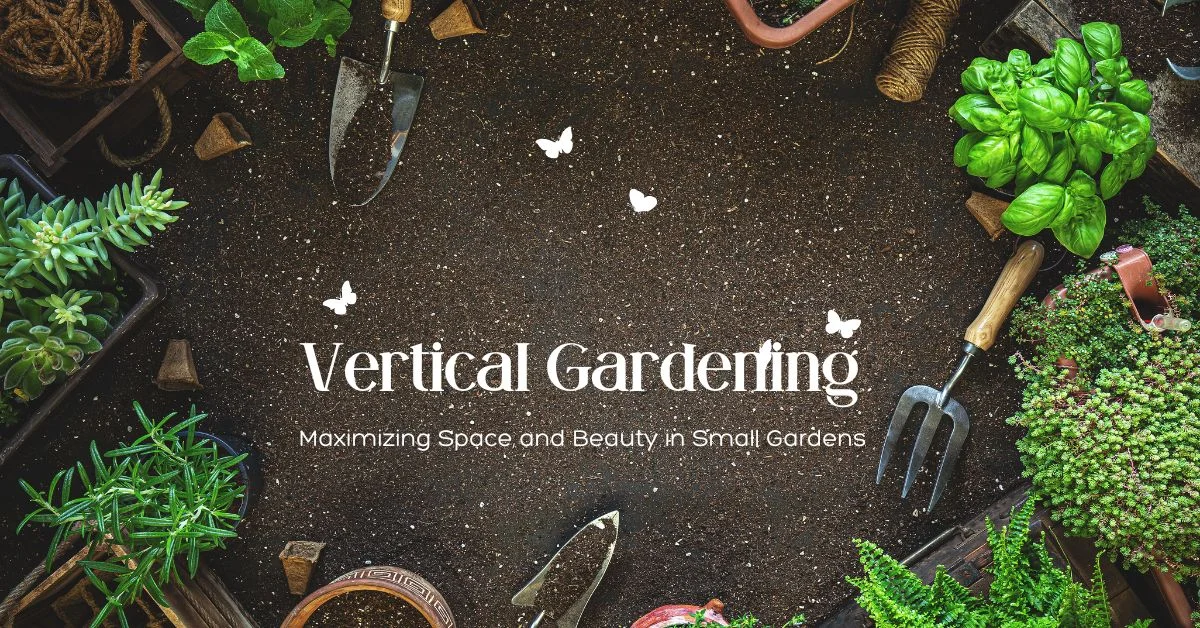Vertical gardening is a great way to maximize space and create a beautiful, green oasis in even the smallest of spaces. With the right plants, system, and lighting, you can create a thriving vertical garden that brings joy and beauty to your life.
Vertical gardening is becoming increasingly popular among urban gardeners, as it requires a small footprint and can be incorporated into unusual spaces, such as balconies and rooftops. With an increasing world population and environmental change, terraced gardening helps to mitigate air pollution, increase biodiversity, and increase quality of life by providing urban populations with more natural spaces to enjoy. Vertical gardening isn’t just for city dwellers, though. For gardeners with limited mobility, vertical gardening can offer greater accessibility by raising plants off the ground and creating a more easily workable space. It conserves not only space but resources like water and fertilizer as well.
In this article, we will explore some tried and true as well as some new and innovative approaches to vertical gardening. We will also provide tips on how to choose the right plants, system, and lighting to create a thriving vertical garden.
Table of Contents
Choosing the Right Plants
When it comes to selecting plants for a vertical garden, it’s crucial to take into account the specific sunlight and shade conditions. Some plants, like vibrant petunias and cherry tomatoes, flourish under direct sunlight, while others, such as ferns and impatiens, prefer shadier spots. By carefully considering the light requirements of each plant, you can create a harmonious mix that will thrive in your vertical garden.
The size of your vertical garden should also inform your plant selection. Compact herbs like basil and thyme are perfect for smaller spaces, adding both aroma and flavor to your gardening experience. On the other hand, if you have ample room to spare on your vertical structure, consider sturdy climbers like beans or cucumbers that can vigorously scale their supports and provide an abundant harvest.
Suggested Article: A Gardener’s Best Friend
Choosing the Right System
There are many different systems available for vertical gardening, including trellises, arbours, and wall-mounted planters. Each system has its own advantages and disadvantages, so it’s important to choose the one that best suits your needs. For example, trellises are a versatile and space-saving method for growing vining plants. The use of trellises for vertical gardening is a tried-and-true method that simply makes sense.
Just about any vining plant can be grown on a trellis or arbour. If you dream of a rose garden but don’t have the ground space, a vining rose will flourish on a trellis. Imagine a fragrant wall of night-blooming jasmine on your balcony. What a heavenly outdoor living space that would create! A vine wall can create privacy, provide shade, and create wonderful visual appeal.
Choosing the Right Lighting
Ensuring the right amount of sunlight is crucial for the success of any vertical garden. However, in urban environments or shaded areas, natural light may be limited. This is where artificial lighting such as LED grow lights comes into play. These modern marvels offer a reliable solution by providing the necessary light spectrum for plant growth, mimicking natural sunlight with impressive efficiency. By strategically placing LED grow lights in a vertical garden setup, you can ensure that every plant receives the optimum amount of light for healthy and vibrant growth.
The use of LED grow lights opens up exciting possibilities for indoor vertical gardens. Beyond simply compensating for the lack of natural light, these energy-efficient solutions enable gardening enthusiasts to create lush green displays in unconventional spaces without being tied to traditional outdoor conditions. With careful positioning and scheduling, it’s possible to cultivate a diverse range of plants year-round regardless of external weather patterns or geographical limitations. In essence, embracing LED grow lights as part of your vertical gardening toolkit not only meets the lighting needs but also unlocks new opportunities for creativity and sustainability within urban living spaces.
Useful Items
To keep your vertical garden healthy and thriving, you’ll need a few essential tools:
- Watering can or hose: Watering your vertical garden is essential to keep it healthy and thriving. A watering can or hose with a spray nozzle can help you water your plants effectively.
- Fertilizer: Fertilizing your vertical garden regularly will help your plants grow strong and healthy. You can use organic or synthetic fertilizers, depending on your preference.
- Pruning shears: Pruning your plants regularly will help them stay healthy and look their best. Pruning shears are essential for removing dead or damaged leaves, stems, or flowers.
- Gloves: Gardening gloves will protect your hands from thorns, splinters, and other hazards while you work in your vertical garden.
- Trellis or support system: A trellis or support system is essential for growing vining plants in your vertical garden. You can use a variety of materials, such as bamboo, wood, or metal, to create a trellis or support system.
- LED grow lights: If your vertical garden is located in a shady area, you may need to supplement with artificial lighting. LED grow lights are a popular choice for indoor vertical gardens, as they are energy-efficient and provide the right spectrum of light for plant growth.
- Soil: Choosing the right soil is essential for the health of your vertical garden. Look for a high-quality potting mix that is well-draining and nutrient-rich.
- Adequate Storage: To store all the necessary items to maintain a vertical garden, you will need a shed, or a cabinet. Even better if you can have a toolbox trolley, as it allows you to easily move around the trolley.
Maintaining a Vertical Garden
Maintaining a vertical garden is easier than a traditional garden plot, but it still requires some care and attention. Here are some tips to help you keep your vertical garden healthy and thriving:
- Watering: Water your vertical garden at the base rather than over the top to prevent fungus and mildew growth. It’s best to water your vertical garden less often, with deeper watering than it is to water it a little bit every day. Watering deeply encourages the roots to grow deep, so the plants won’t need to be watered as often. Take special care that all of your vertical planters and hanging pots have drainage holes to prevent overwatering.
- Fertilizing: Fertilize your vertical garden regularly to keep your plants healthy and productive. You can use organic or synthetic fertilizers, depending on your preference. Be sure to follow the instructions on the package for best results.
- Pruning: Prune your plants regularly to keep them healthy and looking their best. Remove any dead or damaged leaves, stems, or flowers. This will help to prevent disease and pests from taking hold.
- Pest and weed control: Keep an eye out for pests and weeds, and take action as soon as you notice a problem. You can use natural or chemical methods to control pests and weeds, depending on your preference. Be sure to follow the instructions on the package for best results.
Useful tips: You can automate your irrigation system by using a garden water pump.
Common Pests and Diseases
Several pests and diseases can affect vertical gardens. Some of the most common pests include:
- Aphids: Tiny insects that feed on plant sap, causing wilting and stunted growth.
- Spider Mites: Spin webs and suck plant fluids, leading to yellowing and leaf drop.
- Whiteflies: Small, white insects that damage plants by sucking sap and transmitting diseases.
- Thrips: Slender insects that pierce plant cells, causing distorted leaves and silvering.
To prevent these pests from taking hold, it’s important to keep your garden clean and free of debris. You can also use natural or chemical methods to control pests, depending on your preference.
Some common diseases that can affect vertical gardens include:
- Powdery Mildew: A fungal disease that causes a white, powdery coating on leaves and stems.
- Root Rot: A fungal disease that causes the roots to rot and the plant to wilt.
- Bacterial Leaf Spot: A bacterial disease that causes brown spots on leaves.
To prevent these diseases from taking hold, it’s important to keep your garden clean and well-ventilated. You can also use fungicides or bactericides to control the spread of disease.
Conclusion
Vertical gardening is a great way to maximize space and create a beautiful green oasis in even the smallest of spaces. With the right plants, system, and lighting, you can create a thriving vertical garden that brings joy and beauty to your life. Whether you’re an urban gardener or simply looking to make the most of your limited gardening space, vertical gardening is a great option to consider.
I hope this article has provided you with some useful tips and inspiration for your own vertical garden. Happy gardening!






